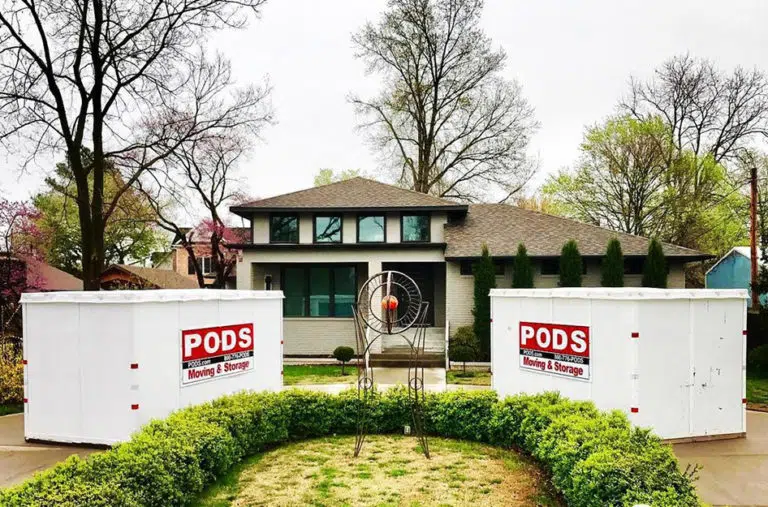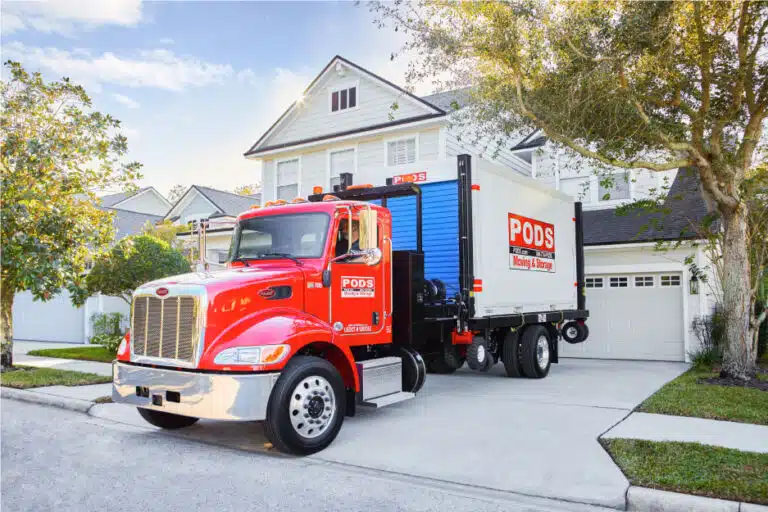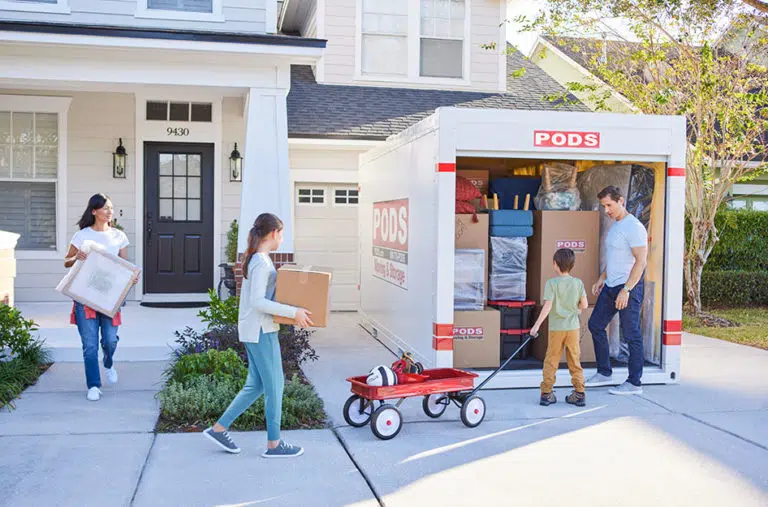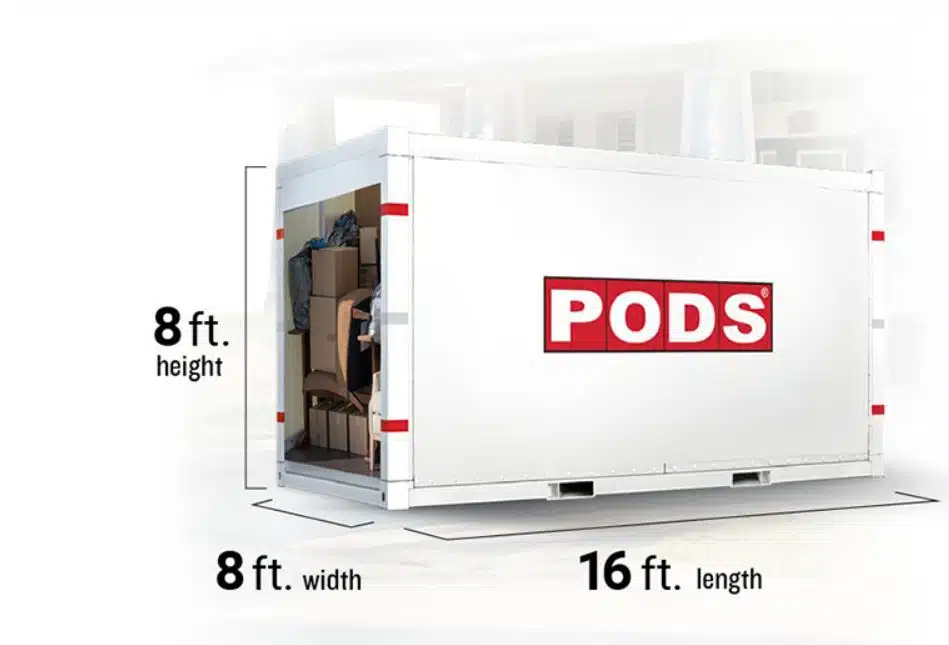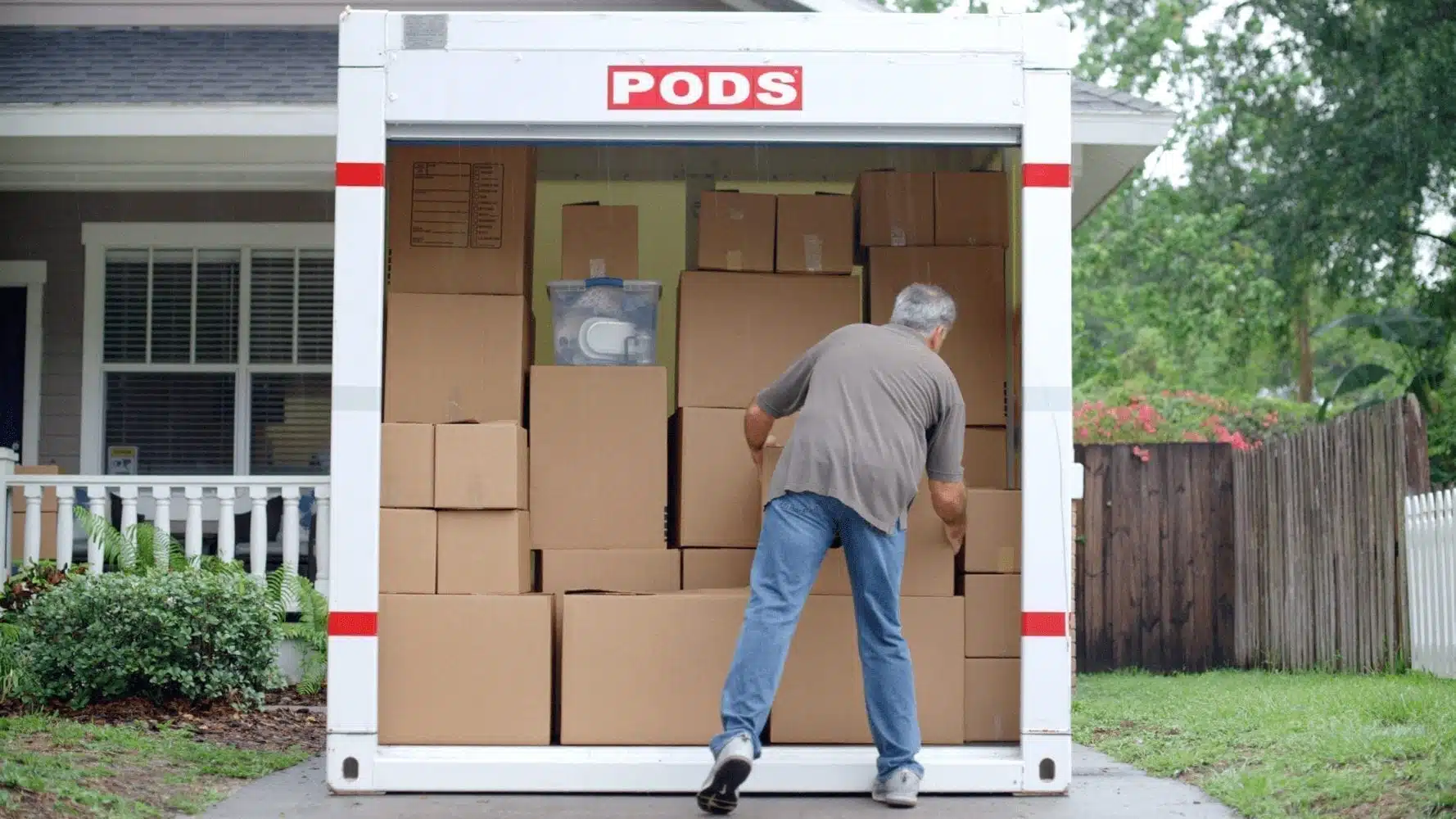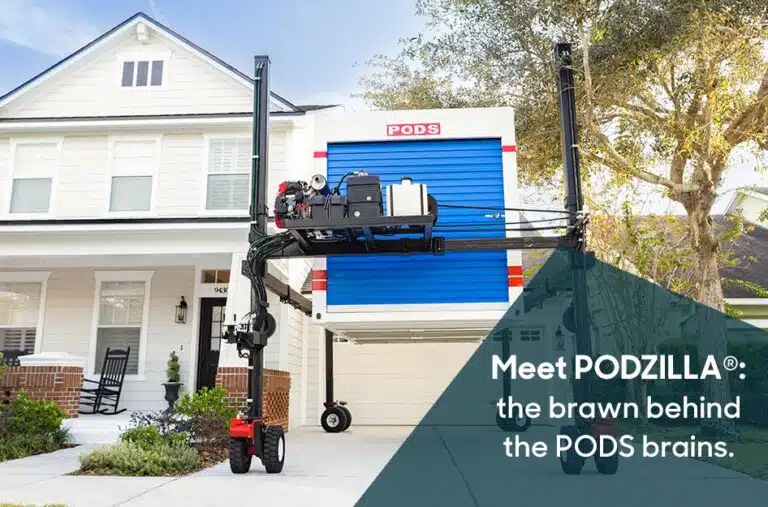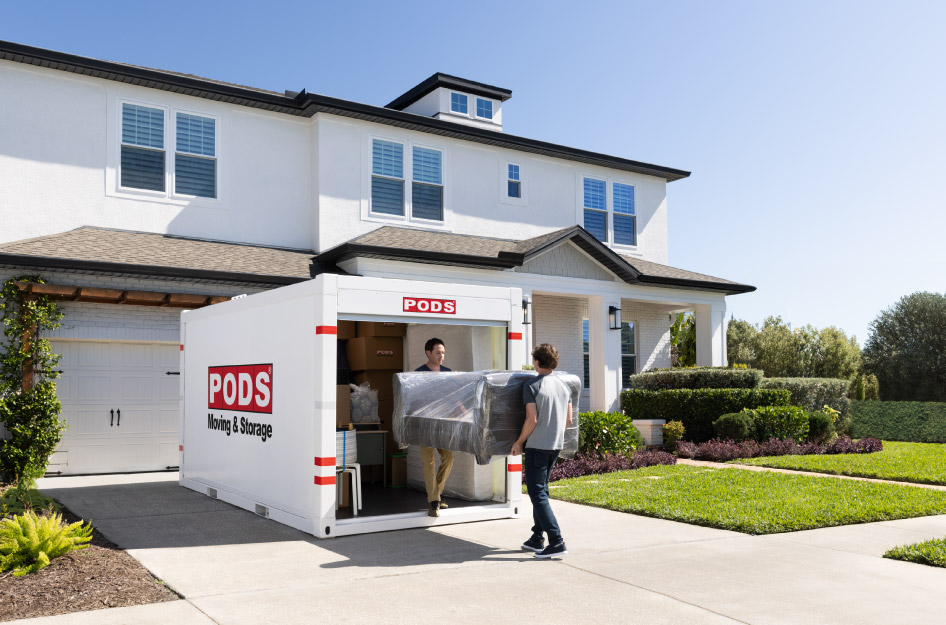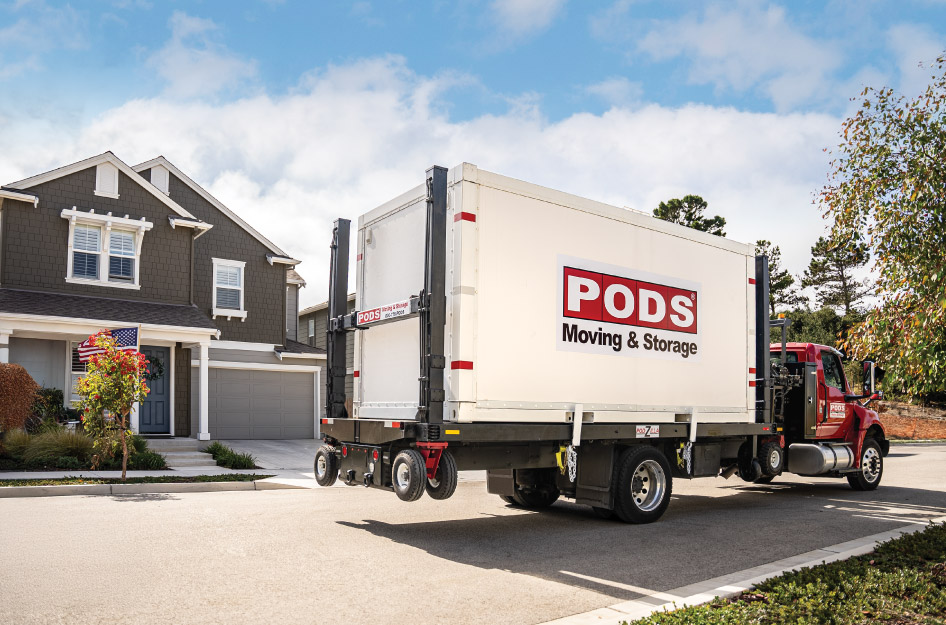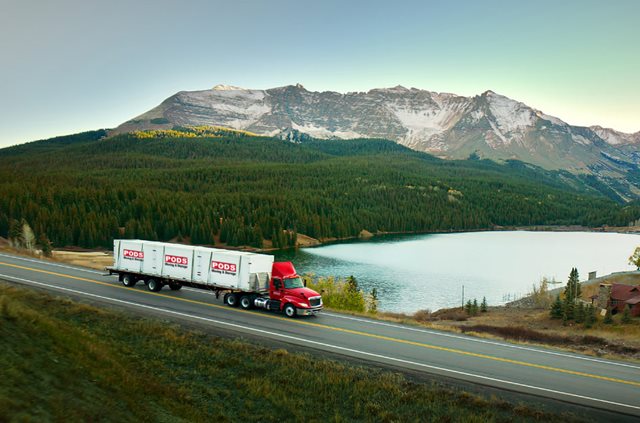Renting a Storage Container: 11 Things You Need to Know
Moving and Storage Container Guides
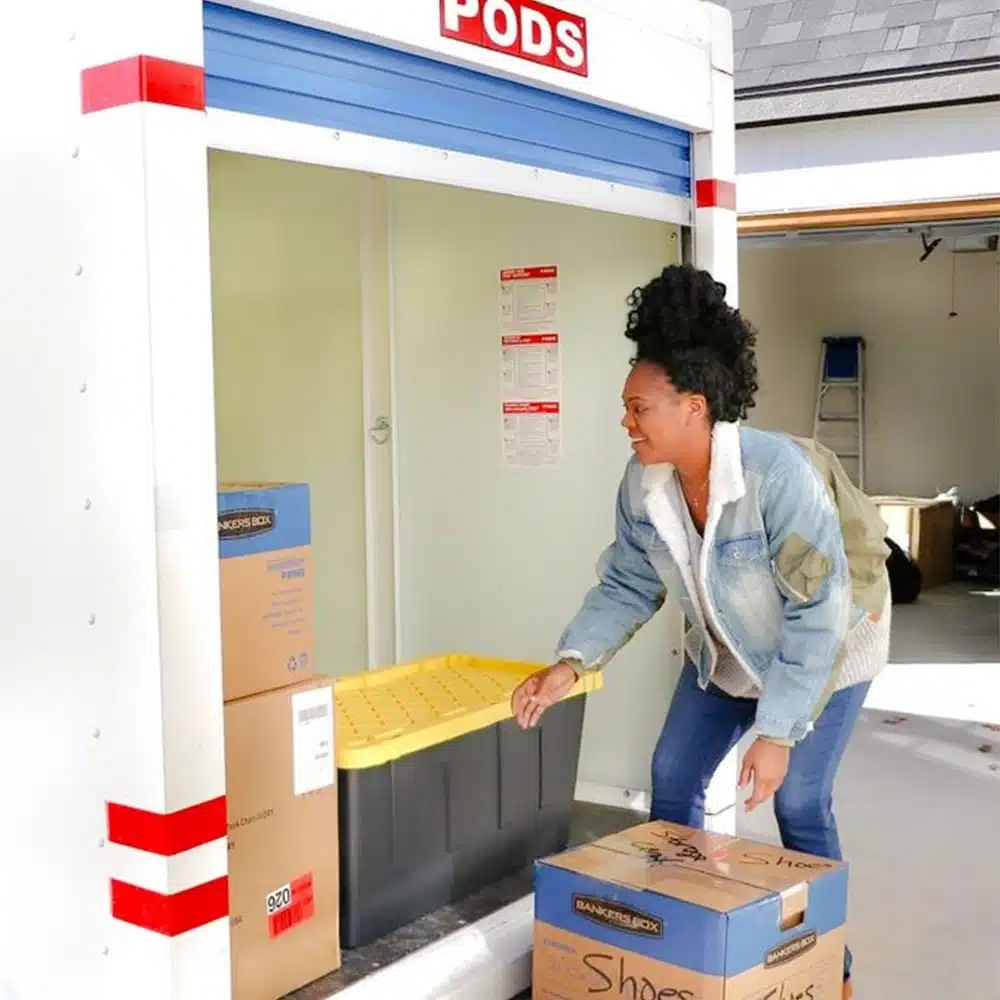
Let’s start with the basics.
What Are Portable Storage Containers?
Portable storage containers are large, secure, and (usually) weather-resistant boxes that can be conveniently moved from place to place. You can put your stuff in the containers — everything from large furniture items to small personal treasures — and then have them delivered to a storage facility or to your new home. Millions of people find storage container rental to be an affordable, flexible, and convenient way to move and store belongings.
When it comes to renting portable storage containers, you don’t have to worry about moving all of your stuff in one day (when you’re renting a PODS storage unit, you have a minimum 30-day window to load and unload your stuff) or driving a big truck through the city or across the country. And using mobile storage containers can actually be a lot more economical than full-service movers.
| Q: How much is PODS storage per month? A: PODS storage unit prices start at $149/month. Delivery and pickup fees average $74.99. In most cases, delivery and pickup charges can be waived, depending on the duration of your container rental. |
Likewise, if you think renting a storage container from PODS means you have to break your back, think again! PODS has plenty of recommendations and guidance for packing and loading. Not to mention, PODS does all the driving. And, to top it off, you have built-in storage with PODS. So if your plans change or you need to store your items for a bit longer than expected until your new home is ready, you can easily do that — as opposed to potentially loading and unloading multiple times with a moving company.
So how does container rental work? Here’s a quick look at how renting portable storage containers works with PODS, whether you’re just using them for storage, a move, or a combination of both.
How To Rent a PODS Container:
- Get an estimate (you can get a free local quote from PODS or call 855-706-4758 for long-distance moves).
- Choose your container size(s) and make a reservation.
- Your container is delivered to your current residence.
- Load your container.
- Your loaded container is picked up.
- Your container is taken to a secure PODS Storage Center or delivered to your new home.
- Unload your container.
- The container is picked up and you’re done!
As you can see, renting PODS portable storage containers is simple! All you really have to do is the loading and unloading (and you can even hire someone to do that part for you, if you’d like).
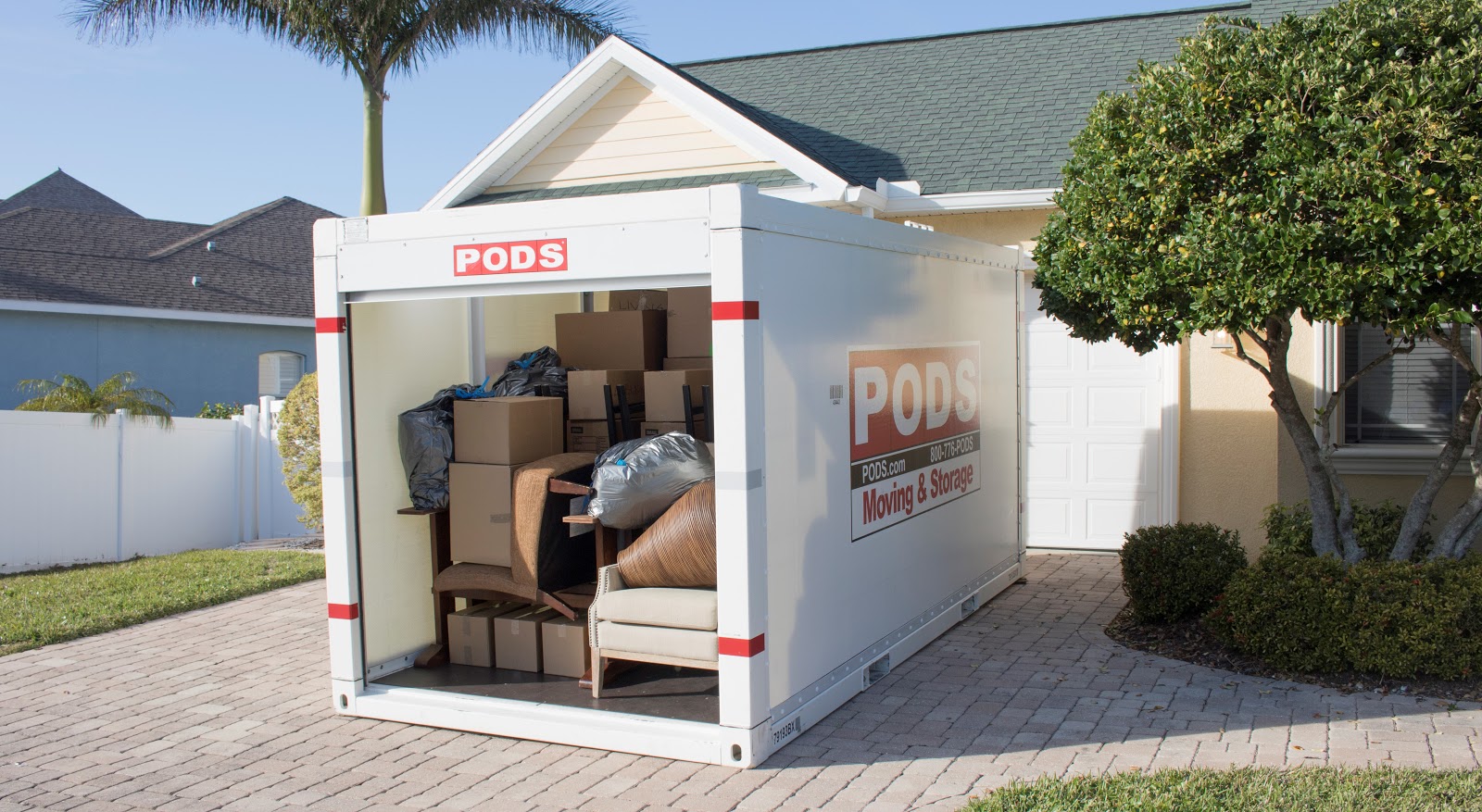
With a PODS container delivered to your driveway, you can load and unload over the course of a few days, weeks, or even months — on your timeline.
What You Need to Know Before Renting Portable Storage Containers
Now that we’ve reviewed the fundamentals, let’s dive into more details. Here are the most important questions and factors to consider when renting a storage container. Click on the links for specifics about each one.
- Will you be using portable storage containers for moving or storage or both?
- Portable storage vs. self-storage units: What’s the difference?
- Watch out for sturdiness and weather resistance — not all containers are created equal.
- What size and how many containers do you need?
- Do you have space for delivering and parking the container?
- Will you need local or nationwide service?
- You’ll want to keep track of your stuff.
- Proper packing and loading minimizes damage risks.
- You can hire hourly help.
- Will you need moving insurance?
- It pays to plan ahead.
| Q: Can you rent a shipping container? A: Yes, renting a PODS container for your move can be the most economical choice compared to renting a truck or hiring full-service movers. You pack and load the container yourself, so hiring packing or moving help is unnecessary. And the flexibility alone — the freedom to pack, load, and unpack on your schedule — is invaluable for busy families. |
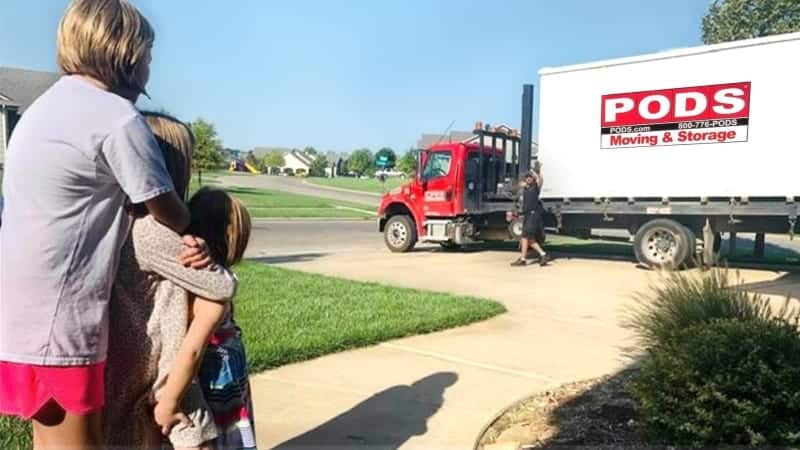
When you’re finished loading your container, PODS professionals will transport your belongings to your new home or to a secure storage facility.
1. Will You Be Using Portable Storage Containers for Moving or Storage or Both?
Storage container rentals can be useful for all kinds of situations, but these are some of the most common uses:
Moving With Storage
Selling Your Home
Containers give you convenient on-site temporary storage to help you stage your home for potential buyers.
Remodeling Your Home
Remodeling and renovations are already stressful, so why not skip the trip to the storage unit by having a storage container delivered right to your house? Especially if your project is large (requiring you to move furniture out of the way) but not necessarily a months-long one.
Downsizing
Whether moving somewhere to relocate after retirement or just trying to simplify, renting a storage container can make home organization and downsizing much easier. Just put all your extra furniture and possessions in the container and have it taken directly to storage or a donation center.
| Did you know? Portable storage containers are also great as sorting stations during a major decluttering! |
2. Portable Storage vs. Self-Storage Units: What’s the Difference?
So why not just go with a local self-storage unit if you need temporary storage or are not moving far? You can definitely do that, and it might be a bit cheaper. With a storage unit, mobile needs aren’t really a factor. But there are some big differences between portable and local storage that you’ll want to keep in mind.
Portable Storage
With portable storage, you have a container delivered to your driveway or the parking lot of your apartment complex. This means you can load and unload over a few days, weeks, or even months rather than finding a way to transport your belongings to a self-storage unit over a day or two. Plus, if you need to get something out of the container, you have 24/7 access to your stuff.
When you’re finished loading, the container can be professionally transported to your new home or to a secure storage facility. If the container doesn’t need to go anywhere (like if you’re only using it for on-site storage), a driver will pick it up when it’s no longer needed.
Self-Storage
With a self-storage facility, you’ll have to transport all your things to the storage unit, which may mean renting a truck and personally handling the driving. This can also mean moving things in and out of the facility to accommodate your moving and storage needs. And if the facility doesn’t have 24/7 access, that means working around their schedule should you need to load or pick up your items.
| Q: Are PODS safe from theft? A: PODS portable storage containers are a secure storage solution, thanks to tamper-resistant locks and reinforced walls that protect against damage and theft. And with your own lock and key, you simply lock up your items to ensure the storage containers are secured when not in use. |
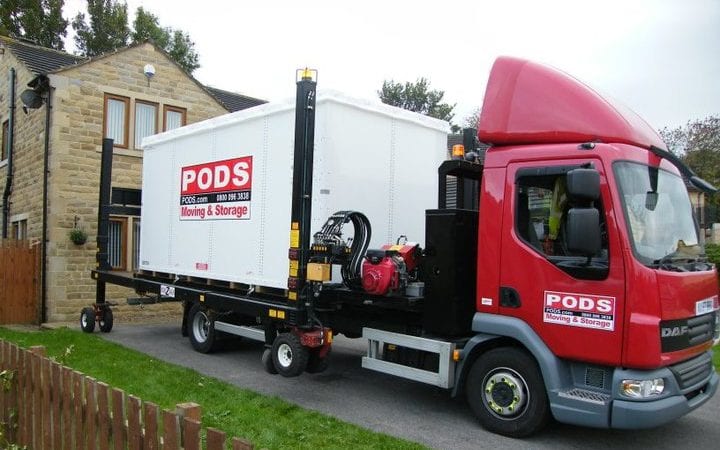
PODZILLA is a hydraulic lift system that allows drivers to seamlessly place PODS containers in your driveway and then pick them up later.
3. Watch Out for Sturdiness and Weather Resistance — Not All Containers Are Created Equal.
Moving and storage containers may seem simple: They're just big boxes that hold your stuff, right? Well, not exactly. If you’re not careful, you may end up with a container that doesn’t actually protect your stuff.
The quality can vary significantly among moving container companies. While PODS containers are steel-framed and built for impact and weather resistance, others may be made mostly of wood and covered by a tarp. Watch out for some companies that advertise their containers as “all steel,” too, which may only be lightweight metal sheeting that offers no added security for your belongings.
In a nutshell, be sure to research the container quality before you choose a company.
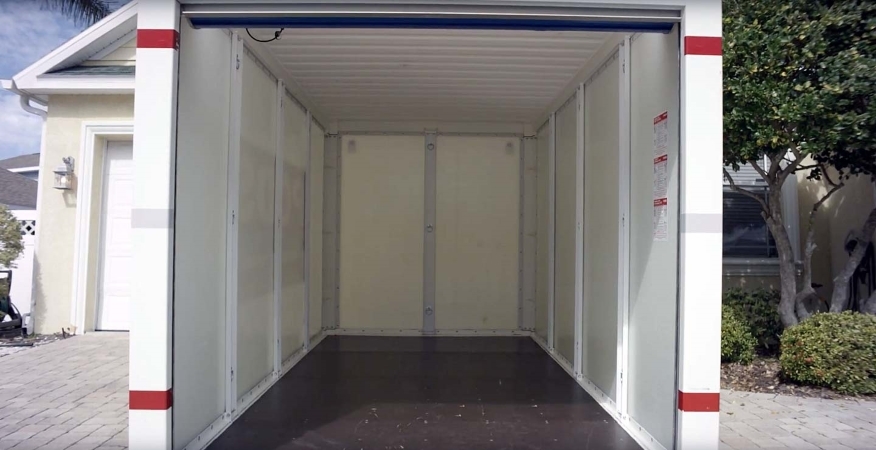
PODS containers come in 8-foot, 12-foot, and 16-foot units — and you can mix and match different sizes to meet your needs.
4. What Size and How Many Containers Do You Need?
While some young college students may be able to fit everything they need into the back of their cars, the rest of us will need something bigger. But just how much space do you need for storing and moving? That will depend on several factors, like how large your home is, whether it’s lightly furnished or filled to the gills, and how efficient you are at packing and loading.
Not all providers offer multiple sizes, but PODS container sizes come in 8-foot, 12-foot, and 16-foot units.* You can mix and match different sizes to meet your needs.
| Q: What fits in an 8-ft PODS container? A: An 8-foot PODS moving and storage container is the perfect size for a smaller move. It’s great for college students, small apartment dwellers, or anyone looking to downsize. Comparable to a 5’x10’ storage unit or a 10’ truck rental, it can fit about as much stuff as you would expect to be able to fit into a typical walk-in closet — up to 402 cubic feet of usable space. And the best part? It’s also the perfect companion to one of the larger container sizes, to make your move even more customized. |
5. Do You Have Space for Delivering and Parking the Container?
While portable storage containers don’t take up a huge amount of space, you do need to make sure you have enough maneuvering room for the container and its delivery process. Fortunately, if you’re renting a PODS container, the PODZILLA® lift system can maneuver containers into some amazingly tight places a normal moving truck or container company can’t reach. It’s a level-lift technology that makes it easy for PODS drivers to pick up and set down your moving and storage container almost anywhere that’s flat, level, and clear of obstructions. Once placed, you’ll be ready to start moving, store your belongings, or kick off your renovation project.
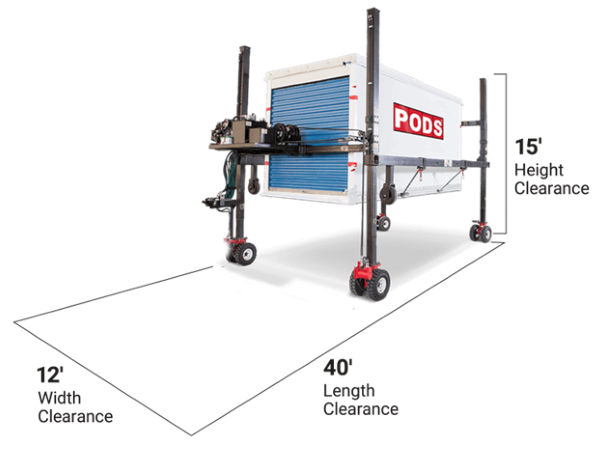
As for clearance room for PODZILLA, you’ll need a path that’s 12 feet wide, 15 feet high, 40 feet long (about two standard parking spots), and free of obstacles to make the delivery. If your driveway isn’t quite 40 feet long, the maneuvering area can include the street, too. Key obstacles to watch out for include sprinkler heads, bushes, concrete curbing, basketball hoops, parked cars, and mailboxes. Once that's taken care of, leave a couple of feet open so your driver can decouple the container from PODZILLA, and you’re set.
For most storage container rental companies, having your own driveway is ideal. But thankfully, mobile storage containers can usually go on the street or even in a shared parking lot — as long as you have the proper permits. If a paved surface isn’t an option, contact your company to discuss alternatives, and remember that your container’s placement is always up to the driver’s discretion..
To help you have a smooth delivery process, here are a few more tips:
Finally, if you have any questions or concerns at all about container placement, you should always reach out to the company ahead of time — before the delivery.
| Q: How much can fit in a 16-foot PODS container? A: Our largest container will typically hold the belongings from an average three-bedroom house. Want to see it in action? This video will show you just how much will actually fit in there. |
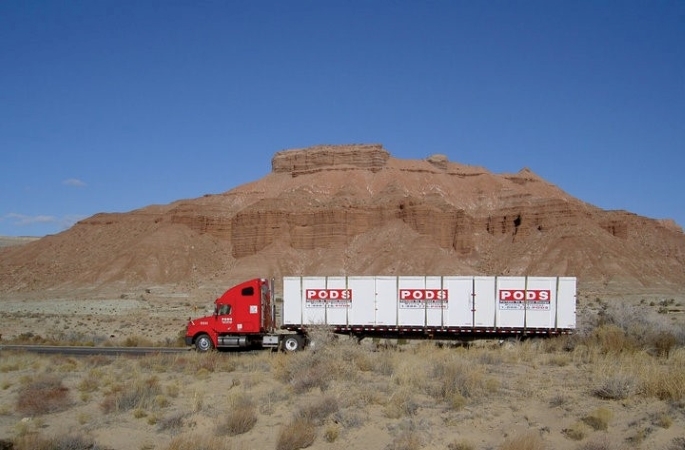
PODS does all the driving for you.
6. Will You Need Local or Nationwide Service?
One of the best parts about storage container rental is that you get to skip the driving. Well, as long as you’re using the right company.
If you choose a moving and storage container company that has a broad, nationwide network (like PODS), then you shouldn’t have to do any container driving — even if you're moving 3,000 miles across the U.S. Whether you’re in the same city or another state, renting a PODS container means the container will come to you.
On the other hand, while PODS offers both local and long-distance service, some moving container companies don’t provide local portable storage or moving service at all.
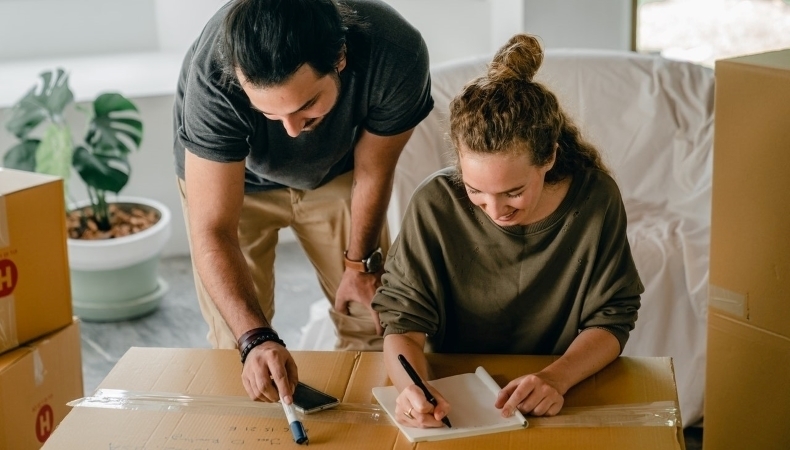
You’ll thank yourself later if you take time to label your boxes and write down what’s inside each one.
(Source: Ketut Subiyanto via Pexels)
7. You’ll Want To Keep Track of Your Stuff.
Loading a PODS portable storage container is easy, but you’ll still have to keep track of a few things, like where you put your stuff. This is especially true if you’re using multiple containers.
Here are a few neat tips to help organize your stuff with multiple containers:
Make an Inventory for Each Container
Record the container serial number and write down everything that’s inside, so you can unload easily and efficiently or access what you need while it’s at a storage center.
Stagger Container Deliveries for Convenient Unloading
For instance, you might want to have the container with your essential everyday items — like your mattress and television — come before the one that has all of your specialty china and old record collection.
Designate One Container for Storage
If you’re downsizing or not sure what items you’ll want in your new home, designate one container for storage. That will cut down on the number of items you have to deal with when you start unloading.
If you take a little bit of time to plan your packing and loading before you get started, you’ll thank yourself later.
| Q: How many PODS containers do I need for a 3-bedroom house? A: One 16-foot PODS storage container, our largest, is the ideal size for moving a larger home. For comparison, think about a parking space (but imagine it in 3D), a 10’x15’ traditional storage space, or a 20-foot rental truck — each of those is approximately the size of our 16-foot unit. And believe this: You can get a lot of furniture and belongings into an 835-cubic-foot container. |
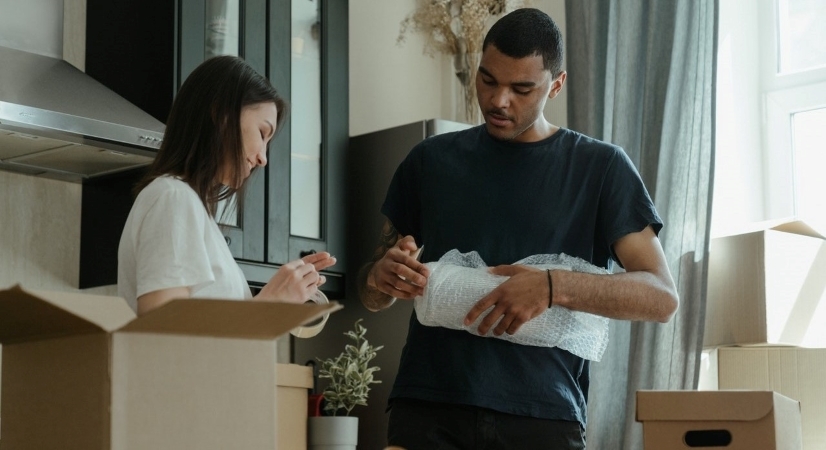
Careful packing with the proper materials helps to reduce the risk of anything happening to your belongings in transit.
(Source: Cottonbro via Pexels)
8. Proper Packing and Loading Minimizes Damage Risks.
As with any type of move, when you pack and load your stuff carefully, you can significantly lower your risk of damage. Just make sure you’re following best practices.
Some of the most important things to remember when packing are:
For more packing advice, see our packing and loading guide and tips to avoid damage when moving long distance.
9. You Can Hire Hourly Help.
If all this talk about packing and keeping track of your stuff sounds intimidating, don’t worry. You don’t have to do it all by yourself. You can hire hourly assistance from pros who have experience working with portable moving containers.
They’ll know how to pack and load your stuff safely and efficiently, so you maximize your space and reduce the risk of damage.
And if you’re renting a PODS container, the company can also help you find reputable packing and loading services in your area.

No matter what kind of insurance you get for your move, make sure you read all the fine print before you sign anything.
10. Will You Need Moving Insurance?
You’ve got insurance for your stuff while it’s in your home. But what about when it’s not in your home?
Homeowners insurance doesn’t always cover your belongings during a move. And even if it does, getting supplemental moving insurance may still be a good option. For instance, if you file a claim through the moving company’s coverage, your homeowner's insurance rates wouldn’t be impacted. In addition, the plan’s deductible will probably cost you less out of pocket (as little as $100), compared to your homeowners insurance deductible, which could be $1,000 or more.
In some cases, you can get these policies from your existing insurer or a third party. But it’s often easiest to just get insurance through the moving container company.
If you go with a company like PODS, there are two main kinds of protection:
No matter what kind of insurance you end up getting, make sure that you read the policy carefully before signing it.

Planning your move in advance with a timeline and checklist will help you save money and time — not to mention stress.
(Source: Anete Lusina via Pexels)
11. It Pays to Plan Ahead.
A lot of the considerations and tips we’ve shared about renting a storage container and moving effectively all have one thing in common: good planning. If you plan your move in advance, you can save money and time and cut down on the stress and hassle.
It can help to make a master list of everything that needs to get done and then make a timeline for doing each item. And lucky for you, we just happen to have a master list to follow. You can even take your pick: Storage Checklist or Moving Checklist.
Figuring out storing and moving solutions isn’t always the most fun process, but with these tips, you should have everything under control!
Easton Smith works as a freelance writer and researcher, reviewing technology trends and the moving industry. He moved all around the continent, from New York to California, before landing back in his hometown of Salt Lake City.
*PODS is constantly upgrading its container fleet, and container sizes may vary slightly from one model to another.

Your quote in 60 seconds
Get pricing tailored to your needs!
